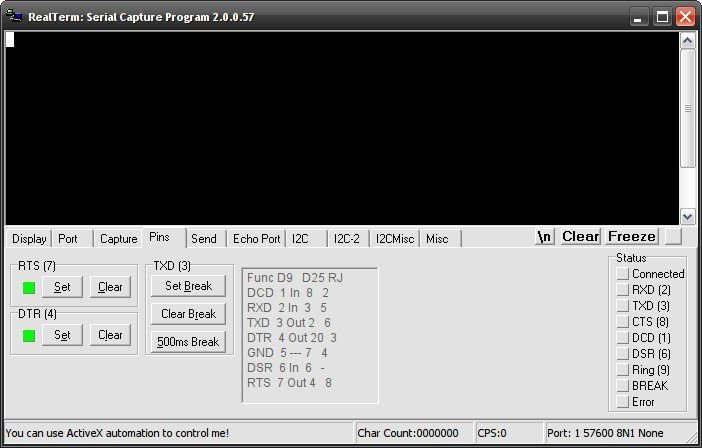

This socket can then be used as a "virtual reverse telnet" connection.
#FREEBSD MINICOM SERIAL#
In some cases some form of reverse telnet or SSH connection is used alternatively, an additional level of indirection can be interposed: the server provides a Serial over LAN service via IPMI, and a command-line utility connects to the server. Modern day setups (generally) use separate management Ethernet networks and console servers. The conserver was written to be used with RS-232 serial wired multi-port cards. Bryan Stansell later merged the forks with most features and added TCP Wrapper access control, SSL encryption, UDS networking and PAM authentication support as well as accepting patches submitted by others. This forked into different versions (generally v8.) used by Sun Microsystems, IBM, and numerous others.
#FREEBSD MINICOM CODE#
Those authors assumed that Fine's code was based on their version, so forked Fine's code, modified it and released it as version 8. A similar program had previously been written at Purdue University. "Console server" as it was originally known, was written by Tom Fine, and was presented with source code to the world at large during LISA IV, in Colorado Springs in 1990.
#FREEBSD MINICOM HOW TO#
It is not a how to I do/fix something in Windows, OSX, Linux or BSD forum.Įdit: In theory, a VM should behave just as it does if the OS was running on metal. This forum is a VirtualBox support forum. If you are correct that the FreeBSD version of VirtualBox doesn't touch the serial ports of FreeBSD then it's not a VirtualBox question, it's a FreeBSD question. Instead of throwing your hands up, can you provide some suggestions? To my knowledge, the Ports version of Virtualbox doesn't even touch the serial port portion at all (it's mostly the network stack afaik). Let's pretend I'm having an issue with the serial port on a Linux machine (perhaps Debian?), accessing from /dev/ttyAMA0

So, let's pretend I didn't say the dreaded "FreeBSD" eh? Unfortunately there's no help there either.

Loukingjr wrote:your question would have a better chance of being answered on the FreeBSD forums.


 0 kommentar(er)
0 kommentar(er)
